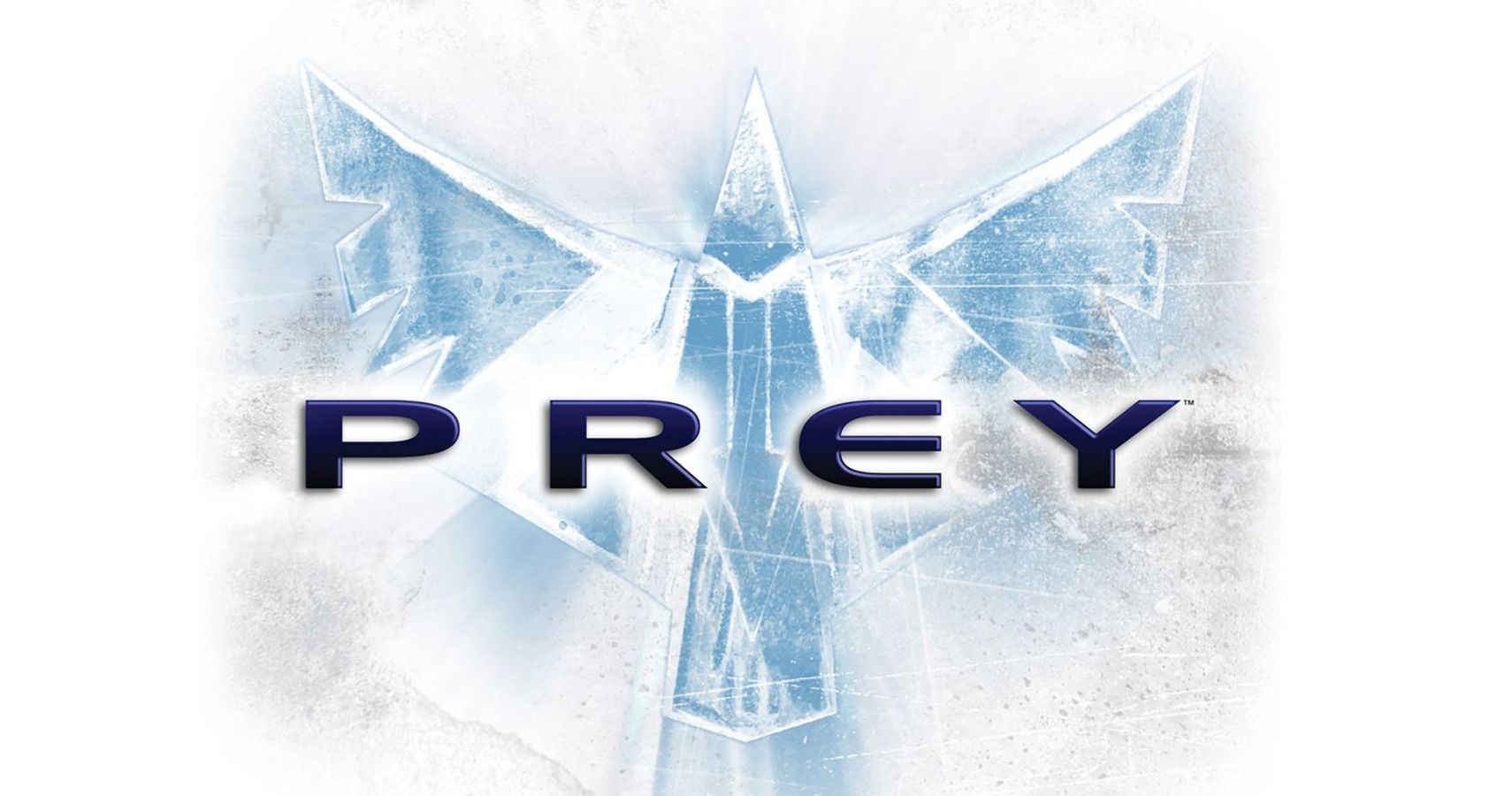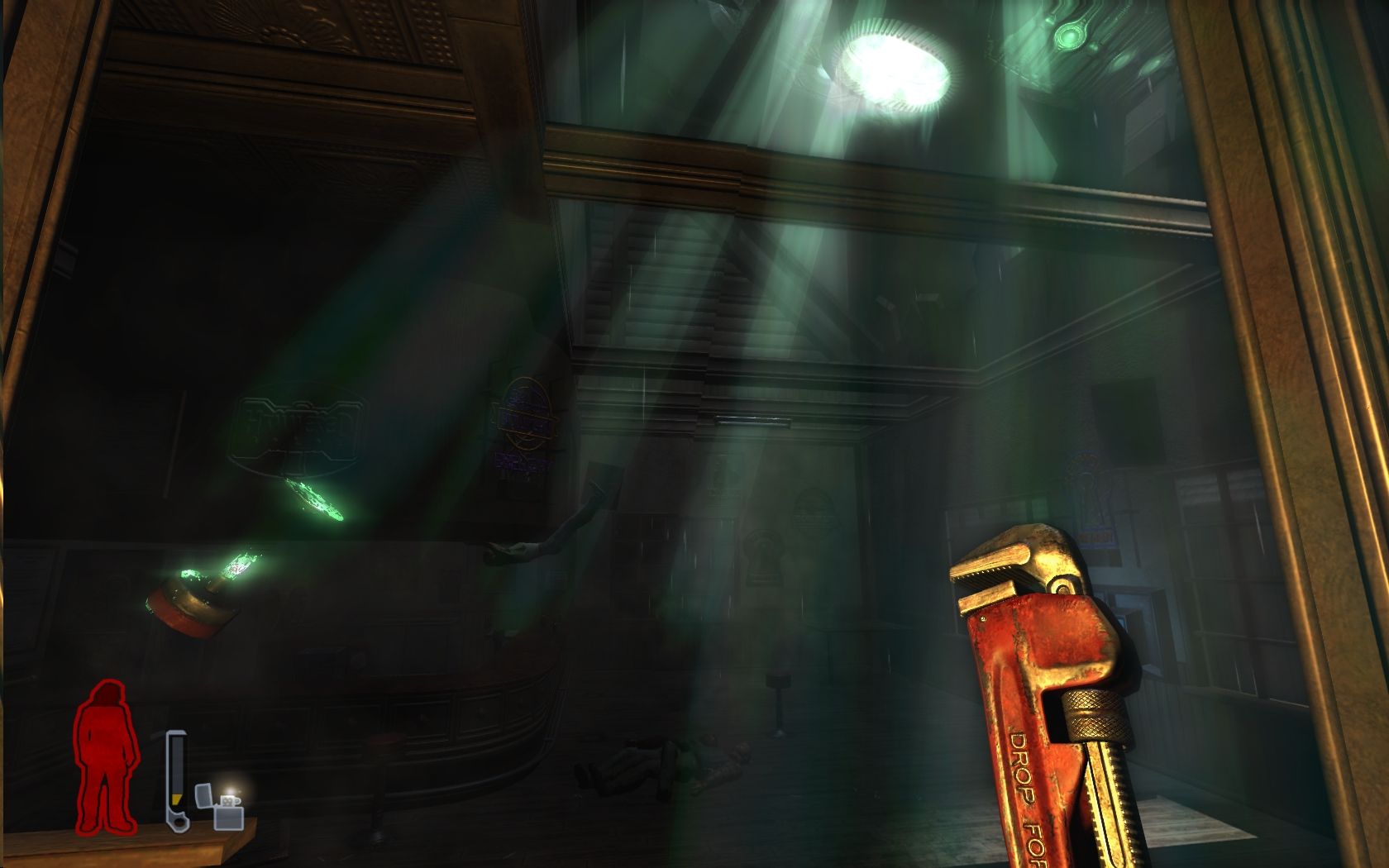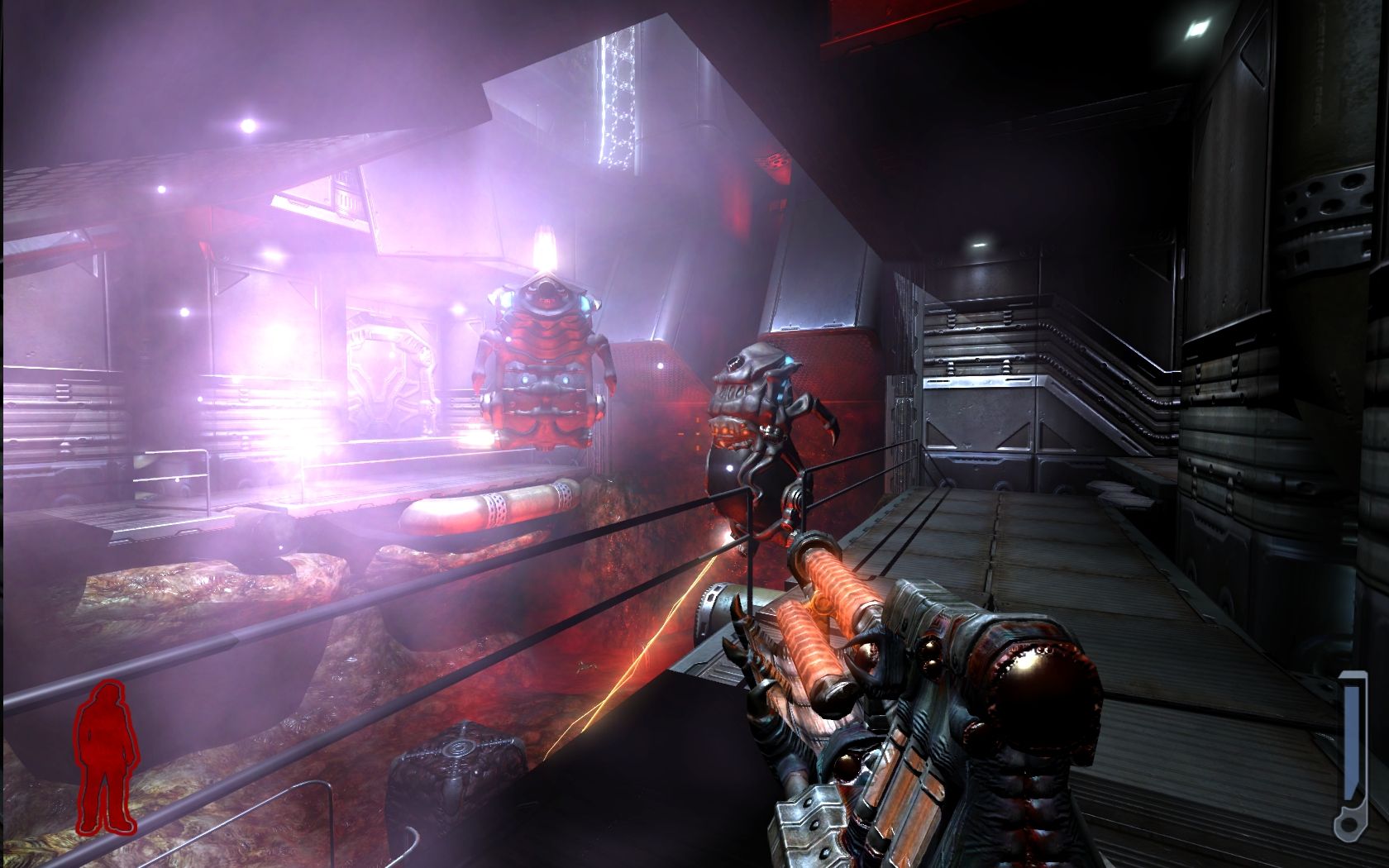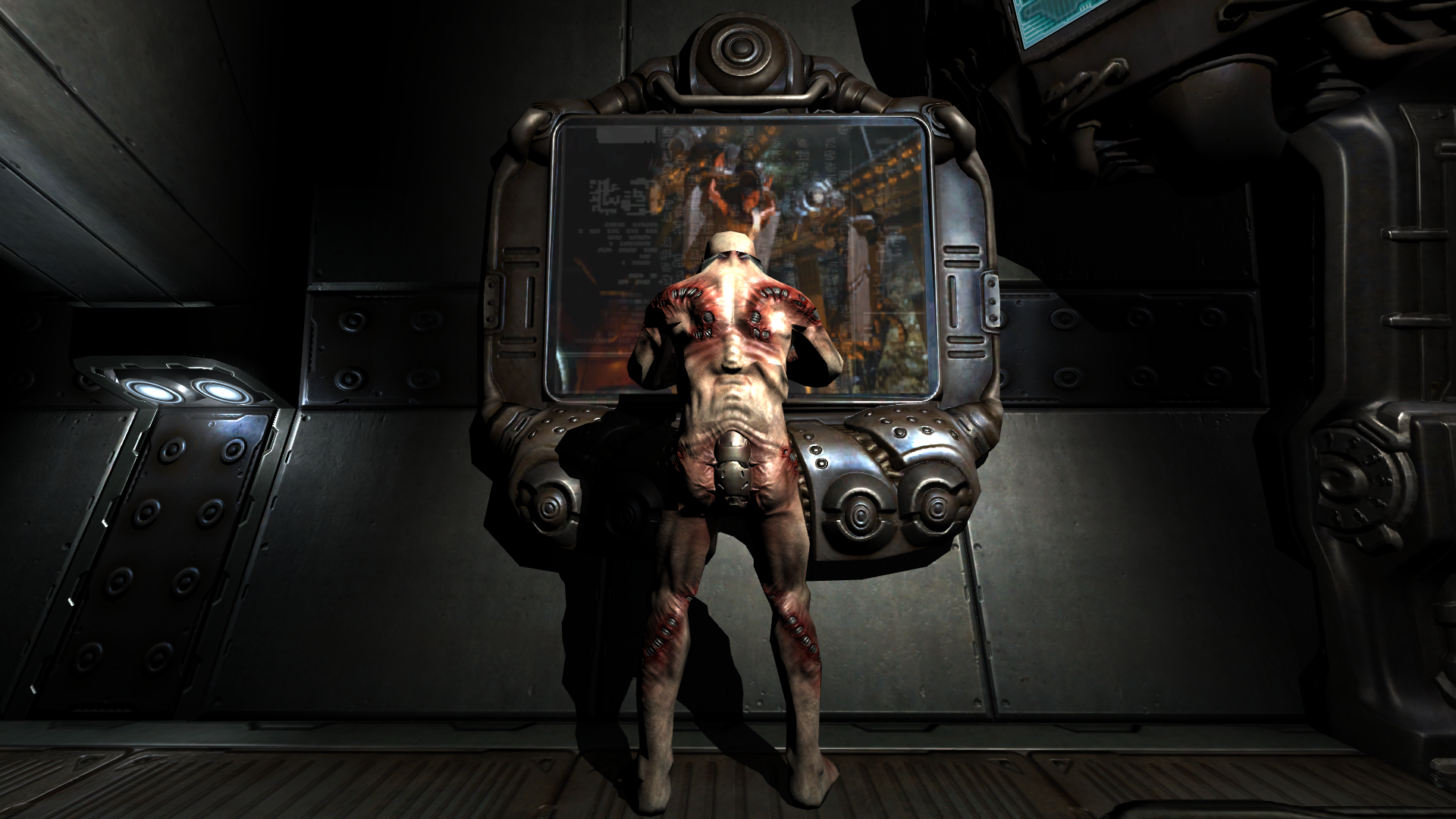We’re all massive Prey fans here at TheGamer. However, we’re almost always referring to the 2017 reboot from Arkane Studios, which has absolutely nothing to do with the sci-fi shooter that established the franchise over 15 years ago. I’m talking about Prey from Human Head Studios, a gruesomely fascinating experience that emerged back in 2006 and acted as a compelling showcase for the Xbox 360, a console that was fresh off the block and in desperate need of big games. Zenimax’s effort was Prey in name only, and that’s an important distinction to make when talking about the game that started it all.
Prey perfectly fit the bill, modifying the engine used by id Software for Doom 3 and crafting a horror shooter that engaged with native themes, body horror, and portal technology that was genuinely ahead of its time - beating Valve to the punch and toying with player perspective in a way that still turns my stomach. Despite launching in the noughties, the development of Prey began as early as 1995 under the banner of 3D Realms, who some of you will know as the creators of Duke Nukem. Compared to the lonely foul-mouthed boomer, Prey was a more ambitious and mature venture for the time, especially in terms of its technology.
As far back as 1995, Prey was toying with real-time portal technology that allowed you to enter a portal from one rendered space and emerge into a completely new one, which was a game-changing mechanic at the time. The medium was still in the infancy of 3D, with shooters such as Half-Life yet to burst onto the scene and change things forever. Duke Nukem was a laughably juvenile celebration of babes and violence, and it seems 3D Realms wanted to use its evident success to create something more, a shooter that went against the trends of the era.
Sadly, this vision wasn’t meant to be, with Prey going through a number of development troubles towards the end of the millennium before being shelved completely. When it finally emerged with Human Head Studios at the helm, the gaming landscape had evolved significantly. They were no longer dealing with a medium without the likes of Half-Life or Doom 3, so the project had to adapt and ensure it was able to compete in the world of modern blockbusters. Development on this new version began in 2001, but went through a number of iterations before it was finally unveiled by 2K Games in 2006. From here, it was only a short road until the eventual release.
If you’ve played Doom 3 from id Software, much of Prey’s core fundamentals will immediately feel familiar. Guns and movement carry a similar weight, while the lightning model spread across the environment echoes the foreboding atmosphere of the horror shooter almost perfectly. Human Head Studios was taking clear inspiration from its competitors, yet had more than enough distinct tricks up its own sleeve to help Prey stand out from the crowd. I’ll never forget the opening, which remains a harrowing example of gradual horror done right.
The campaign begins with Tommy, our main character, staring into the bathroom mirror of a rural bar. He’s cursing at himself, wanting to abandon his native reservation and make a new life in the city with his partner. Tommy believes he is held back by the Cherokee traditions by which he was raised, his grandfather acting as one of the only sources of faith in his life. I can’t speak to how well these themes are handled since I’m a basic white girl, but Prey quickly establishes the plight of our hero and his internal motivations, a few short and dry conversations at the bar introducing characters and relationships with ease.
It’s a little silly when some creeps start flirting with Tommy’s girlfriend and his first instinct is to beat them to death with a wrench, but I suppose 2006 was a different time. From here, you can explore the bar at your own leisure, the heavy rainfall and pervading darkness of the outside world filling the atmosphere with a sense of melancholic loneliness. This soon twists into something more sinister as local news reports begin to report that strange ships have appeared in the sky and are abducting humans en masse. Our race is being harvested, and it’s only a matter of time until we’re next.
Conversations inside the bar descend into panic as cars outside are lifted into the air by a strange ethereal light. Don’t Fear The Reaper by Blue Oyster Cult bursts onto the jukebox as everything erupts into untold chaos, Tommy and his loved ones being pulled into an alien prison by supernatural forces far beyond their comprehension. The world is ending, and we have no choice but to come along for the ride. Prey seldom surpasses this excellent introduction as it evolves into a fairly predictable shooter, but it remains engaging throughout, largely thanks to its harrowing narrative and inventive approach to traversal.
Throughout the campaign we see Tommy lose his loved ones and come closer to his own spirituality, accepting his heritage and using newly attained powers to defeat the alien menace that threatens his homeland. It all becomes a bit silly and over-the-top, with Prey’s approach to native themes being terribly juxtaposed with the gore present across the foreign planets and spaceships you explore. It was the coolest thing ever when I was 12 years old, but as an adult I can see through its inconsistencies and the limited potential of its once lauded portal technology. It toys with perspective ingeniously, though, adjusting your shape, size, and agency in the environment with each passing firefight. But it does get old, cool novelties falling away to unveil a simple set of rules that dictate exactly how everything works.
Putting all of this aside, Prey remains a shooter classic that influenced many that would follow in its blood-drenched footsteps. I still remember the cliffhanger that concludes the campaign, and how I couldn’t wait to see the franchise return in a new, more fully realised form. Sadly, it never did, with the sequel being cancelled after roaming through development hell. Bethesda would soon revive the dormant IP and morph it into something new, abandoning its native themes and overwrought gore in favour of an immersive sim that couldn’t be further from its origins.
I adore the 2017 version, but it’s important to not forget what made it all possible in the first place. It’s difficult to play the original Prey nowadays, with the PC release being delisted from all storefronts, so you'll need to pick up the Xbox 360 version or an old boxed copy. But if the chance ever arises you should give it a spin, since there’s a lot to love about it.




